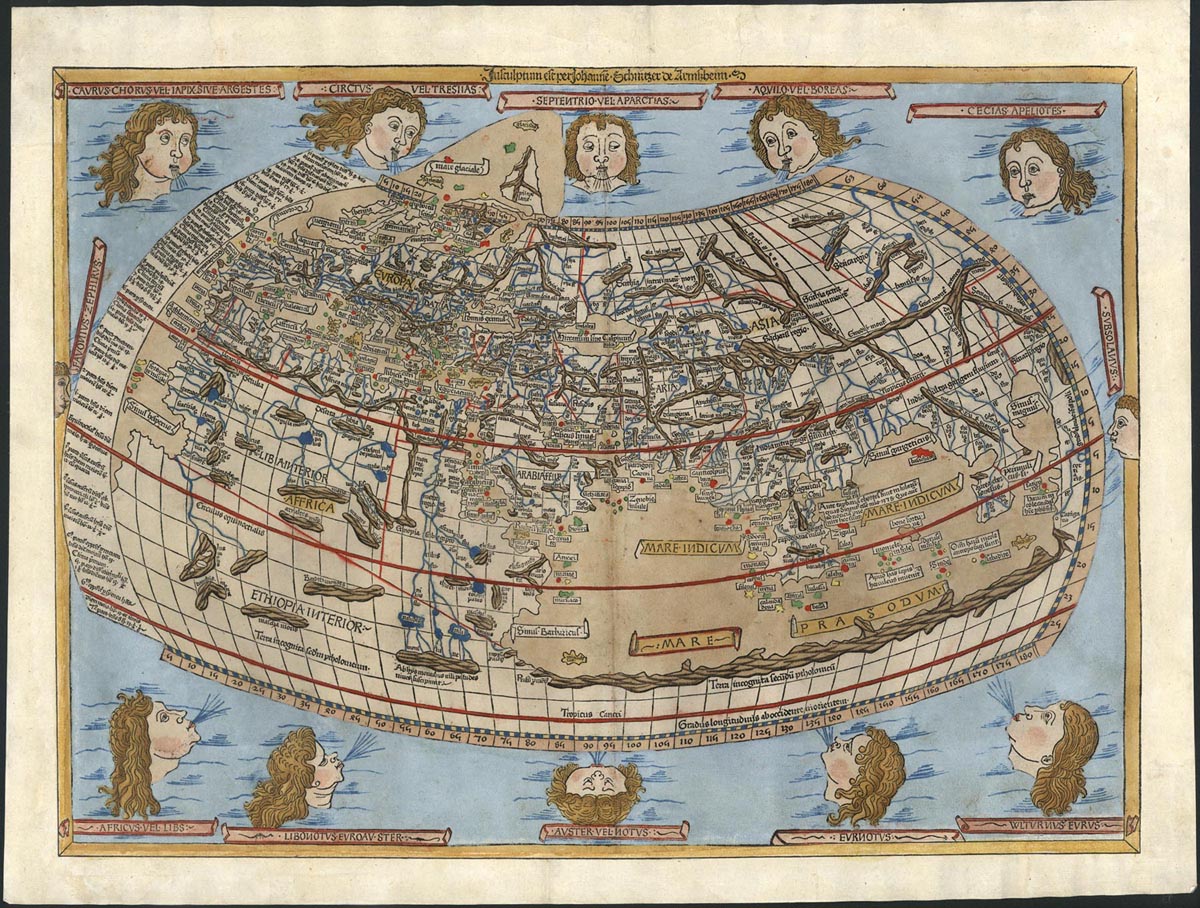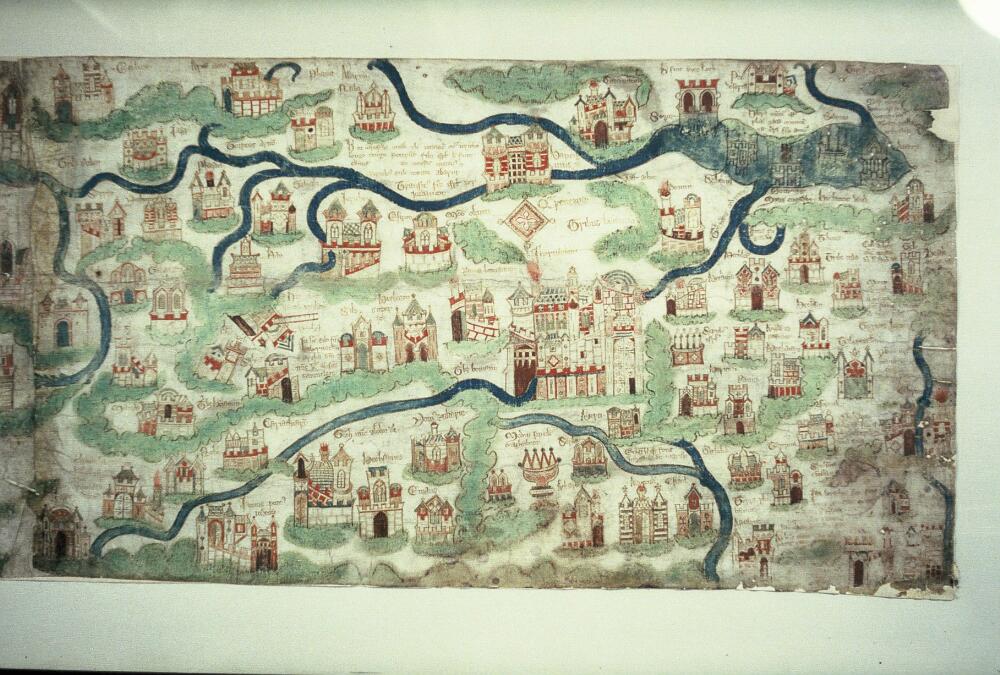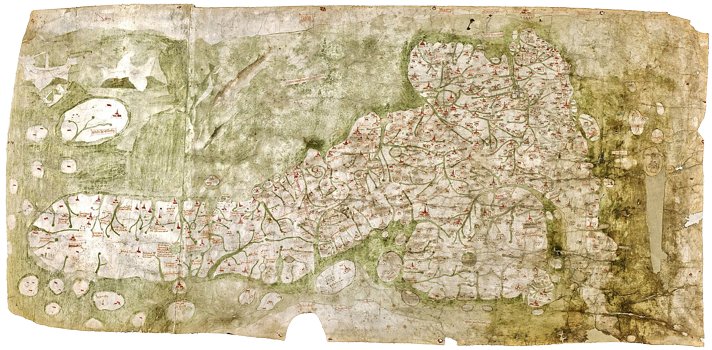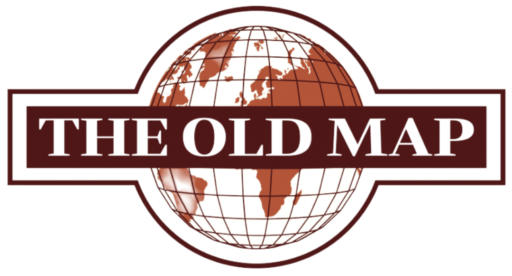Claudius Ptolemy is regarded as the ‘father of geography’. His treatise on map-making, Geography, was written in Alexandria c.150 AD and set the standard for subsequent scientific map-making. The text listed 8,000 places within the classical world from Scandinavia in the north and Libya in the south to Korea in the east and the Canary islands in the west.From the late 14th century Renaissance map-makers and navigators began to rediscover Ptolemy and this printed edition drawing on his data published in 1486.
Every Map Tells a Story
Discover fascinating maps and their stories

WORLD MAP IN CLAUDIUS PTOLEMY, GEOGRAPHIA 1486
PILGRIMAGE TO THE HOLY LAND
Medieval Christian pilgrimage to the Holy Land generated maps to guide the faithful in their journey and to help those unable to travel to spiritually imagine Jerusalem. Devon priest William Wey described two pilgrimages to the Holy Land undertaken in the 1460s in his Itineraries. Oriented with East at the top, it runs from Damascus (top left) and Sidon on the Mediterranean coast (bottom left) to the north, to Beersheva and Hebron (far right) in the south. The Jordan river runs across the top, with Jerusalem to the right.
Wey’s Itineraries match nearly 400 cities, rivers, mountains, sacred sites and even biblical stories found on the map, suggesting he used both as a topographical and spiritual guide.



THE GOUGH MAP OF GREAT BRITAIN
The Gough map is the earliest known example of any map in Britain produced as a separate sheet rather than as a page in a book. It measures 116 x 55 cm, is drawn on the hides of a sheep and a lamb, and is unconventionally oriented with east at the top. It is believed to date to the period 1390-1410. Scotland extends out to the left, and is simplistically represented compared to the more familiar and detailed looking England and Wales. Hadrian’s Wall can be seen crossing the North of England in bright red, creating a very real boundary with Scotland and most of Northumberland.
The map is named after Richard Gough, the antiquary who purchased it in 1776 and bequeathed it to Bodleian in 1809.
